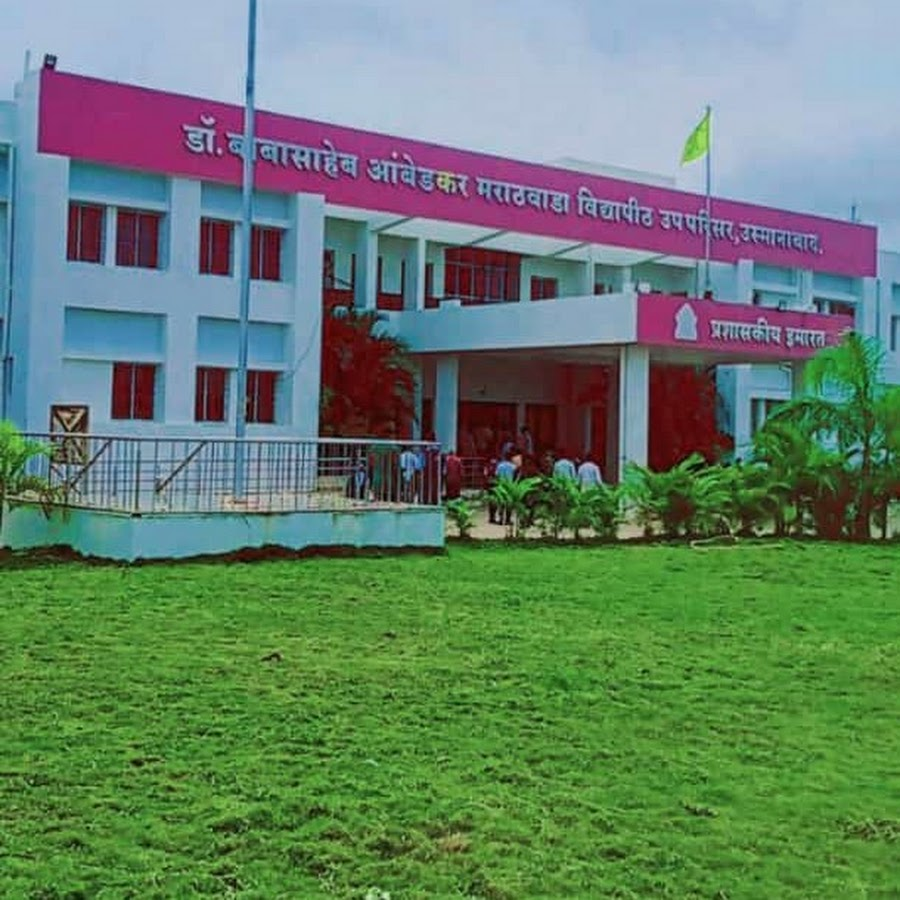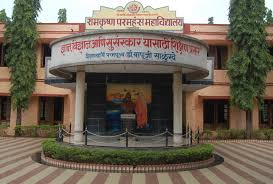Contents
- Early History
- Colonial History
- Post-Independence Era and Contemporary Educational Infrastructure
- Primary & Secondary Education
- Institutions of Higher Learning
- K. T. Patil College of Pharmacy
- Dr. Babasaheb Ambedkar Marathwada University, Dharashiv Sub-Centre
- Prominent Figures & Organizations
- Shri Swami Vivekanand Shikshan Sanstha
- Terna Public Charitable Trust
- Graphs
- Enrollment and Dropout Rate
- A. Student Enrollment Numbers
- B. Student Enrollment (Class-Wise)
- C. Student Enrollment (Gender-Wise)
- D. Student Enrollment (By School Management Type)
- E. Drop Out Rate (By Schooling Level)
- F. Drop Out Rate (By Gender)
- Schools
- A. No. of Schools
- B. No. of Schools (Filtered by Gender Mix)
- C. No. of Schools (By School Management Type)
- Teachers
- A. No. of Teachers
- B. No. of Teachers (By School Management Type)
- C. No. of Teachers (Male vs Female)
- D. Education Level of Teachers
- Sources
DHARASHIV
Education
Last updated on 28 July 2025. Help us improve the information on this page by clicking on suggest edits or writing to us.
The educational framework of Dharashiv aligns with the broader structure of the Indian education system, encompassing pre-primary, primary, secondary, and higher education. By the 19th century, the introduction of the Western education framework in the district changed its educational landscape. British administrators and missionaries became actively involved in shaping education in the region.
Still, even as colonial influences grew, the early 20th century saw a wave of local initiatives; its existence indicated an increasing public awareness regarding the importance of education. Local communities took charge of education, a movement that carried into the post-independence era, shaping the district’s educational landscape in lasting ways.
Early History
Much of India’s ancient educational heritage has been lost over time, and while specific details about Dharashiv’s educational history are scarce, the presence of a Jain Tirtha in the district serves as a remnant of this rich legacy. Ter, located in Dharashiv, holds significant importance, particularly within the Jain tradition. It is referenced in the Jaina Marathi text Jambusvami Charitra, completed in 1688 CE, and is celebrated as a ‘Jaina Tirtha.’ Typically, a Tirtha features accommodations for monks and scholars and is considered to be a vital part of the Jain systems of education.
Colonial History
By the 19th century, the introduction of the Western education framework brought significant changes to the district, as British administrators and missionaries became actively involved in shaping its educational landscape. Colonial administrators and missionary organisations played a key role in establishing formal education structures, marking a shift in the region’s approach to learning.
As Dharashiv was part of the State of Hyderabad, where Urdu served as the official language and medium of instruction, the gazetteer highlights its unique historical context during this period. During this period, it is said that Persian and Arabic were also encouraged, with English taught as a second language. However, much remains to be discovered about Dharashiv’s individual history.
Post-Independence Era and Contemporary Educational Infrastructure
Following India's independence, the education system in the district underwent major transformations, driven by both state policies and local leadership. The introduction of structured education levels such as pre-primary, primary, secondary, and higher education, along with the implementation of National Education Policies, heavily shaped Dharashiv’s educational landscape. Over the years, the sector expanded with contributions from both government-funded institutions and private organisations. Additionally, the introduction of various educational boards, each offering distinct curricula and standards, provided students with more choices and opportunities.
Primary & Secondary Education
During the colonial period, both public and private efforts in education primarily focused on primary and secondary schooling, as indicated by data from district gazetteers across Maharashtra. Higher education remained underdeveloped in most districts, including Dharashiv, with gradual improvements over time. While basic infrastructure for primary and secondary education existed, its expansion was closely tied to increasing enrollment and greater involvement of local figures.

Today, this expansion is evident in the widespread presence of schools across various wards of Dharashiv, with available data reflecting the steady growth of educational institutions in both urban and rural parts of the district.
Over time, institutions affiliated with various educational boards also emerged. Locals identify the State Secondary Certificate (SSC) Board and the Central Board of Secondary Education (CBSE) as the two boards currently available in the district. Notably, the availability of CBSE board schools is a rather recent phenomenon. Most government schools follow the state board curriculum, favoured by many students and parents due to its affordability and accessibility.
Institutions of Higher Learning
Perhaps one of the most notable changes in Dharashiv’s educational landscape is tied to the establishment of higher education institutions. While primary and secondary schooling expanded steadily, opportunities for advanced education remained limited for much of the district’s history. Over time, local leaders and organisations played a crucial role in addressing this gap, leading to the creation of several colleges. As a result, many institutions in the district today are privately managed, semi-private, or autonomous.
K. T. Patil College of Pharmacy
Specialisations in higher education in Dharashiv saw further development over time, evolving from initial offerings in arts and commerce to include fields such as pharmacy, engineering, and more. K. T. Patil College of Pharmacy, established in 1999, is one such institution. Originally focused on basic pharmacy programs, it has since expanded to offer a diverse range of courses, including Pharm. D. and M.Pharma. Additionally, the college is recognised for providing PCI-approved courses.

Dr. Babasaheb Ambedkar Marathwada University, Dharashiv Sub-Centre
Dharashiv does not have a university of its own to oversee its colleges; most are affiliated with Dr. Babasaheb Ambedkar Marathwada University in Sambhaji Nagar. The presence of a university is important for providing oversight of local colleges and for offering diverse and comprehensive course options. Moreover, a university education often holds more value than a college education, and the absence of a local university reflects a lack of these advantages for the local community.

The recent establishment of a sub-centre in Dharashiv is significant as it allows local students access to a broader selection of courses. This development enhances the educational landscape in the region, better meeting the needs of the community and improving overall educational quality.

In addition to these institutions, a number of centres for higher education operate throughout the district, which offer programmes across various disciplines. While the landscape of higher education has broadened significantly since independence, disparities in access, particularly along geographic lines, remain evident.
Prominent Figures & Organizations
Shri Swami Vivekanand Shikshan Sanstha
Shri Swami Vivekanand Shikshan Sanstha is an influential educational organisation based in Kolhapur, which has been active in Dharashiv since the early 1950s. One of its key institutions is Ramkrishna Paramhans Mahavidyalaya, founded in 1959. This college is dedicated to providing quality education, particularly aimed at rural and semi-urban communities, thus playing a significant role in enhancing educational access in the region.

Another important institution under the Sanstha is Dr. Bapuji Salunkhe Law College. Located in Dharashiv and affiliated with Osmania University, Hyderabad, this college offers undergraduate programs in this field.
Terna Public Charitable Trust
Founded in 1980 by Dr. Shri. Padmasinha Patil, the Terna Public Charitable Trust, has played a vital role in the educational landscape of Dharashiv. Dr. Patil has over 25 years of experience as a cabinet minister in Maharashtra, holding significant positions such as Home, Irrigation, and Energy Minister, and has also served as a Member of Parliament representing the Dharashiv constituency. Under the leadership of Vice Chairman Shri. Ranajagjitsinha Patil, the trust has made substantial strides in the education sector.
In 1993, the trust established the College of Engineering, a prominent institution in Dharashiv that offers a variety of undergraduate and postgraduate programs, including B.E./B. Tech and M.E./M.Tech, all accredited by the All India Council for Technical Education (AICTE). Through this initiative and others, the Terna Public Charitable Trust continues to make meaningful contributions to the educational advancements and offerings in the region.
In addition to establishing educational institutions, the Terna Trust is committed to improving education for underprivileged children. It provides scholarships, educational materials, and various forms of support to those in need. The trust also actively participates in the Deen Dayal Upadhyaya Grameen Kaushalya Yojana (DDU-GKY), a government initiative aimed at skill development for rural youth, thereby empowering local communities and fostering growth.
Graphs
Enrollment and Dropout Rate
Schools
Teachers
Sources
Dr. Babasaheb Ambedkar Marathwada University. “Sub-Centre.” http://www.bamu.ac.in/Sub-Centre.aspxhttp://www.bamu.ac.in/Sub-Centre.aspx
K.T. Patil College of Pharmacy. Home.”https://ktpatilpharmacy.org/https://ktpatilpharmacy.org/#
Maharashtra District Gazetteers. 1972. Osmanabad District. Government of Maharashtra.https://gazetteers.maharashtra.gov.in/cultur…
Shahida Ansari, Vijay Sarde, and Mohan S. Pardhi. 2012–13 “Archaeological Investigations in 'Apsinga', A Satavahana Settlement in Osmanabad District, Maharashtra.”Bulletin of the Deccan College Post-Graduate and Research Institute,vol 72 no. 73. https://www.jstor.org/stable/43610699.https://www.jstor.org/stable/43610699
Viraj Shah. 2014. “The Power of Faith: Nemgiri.” Maharashtra Unlimited. Vol 3, no. 4.https://www.academia.edu/41439425/The_Power_of_Faith_Nemgirihttps://www.academia.edu/41439425/The_Power_…
Last updated on 28 July 2025. Help us improve the information on this page by clicking on suggest edits or writing to us.